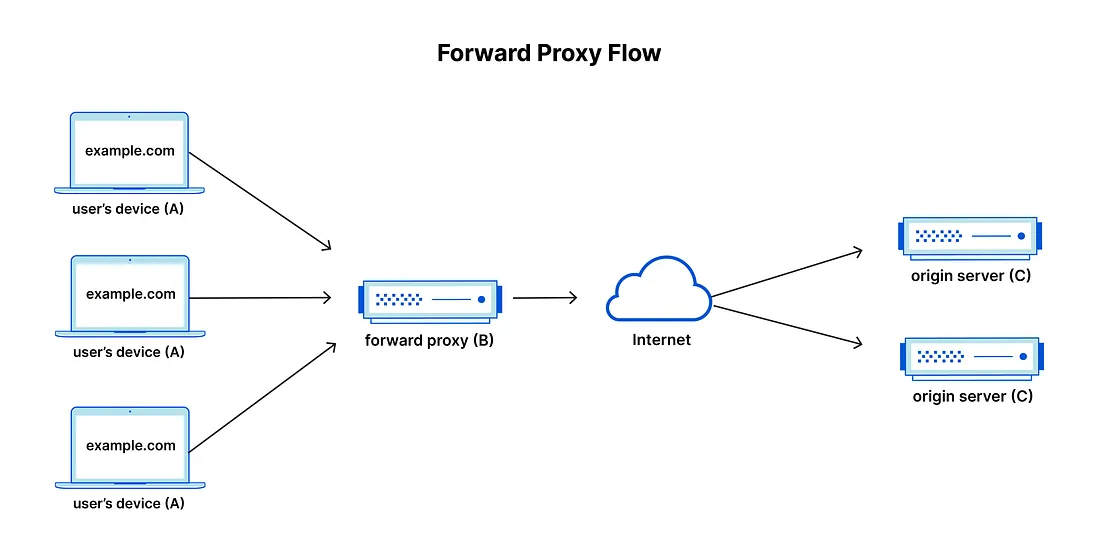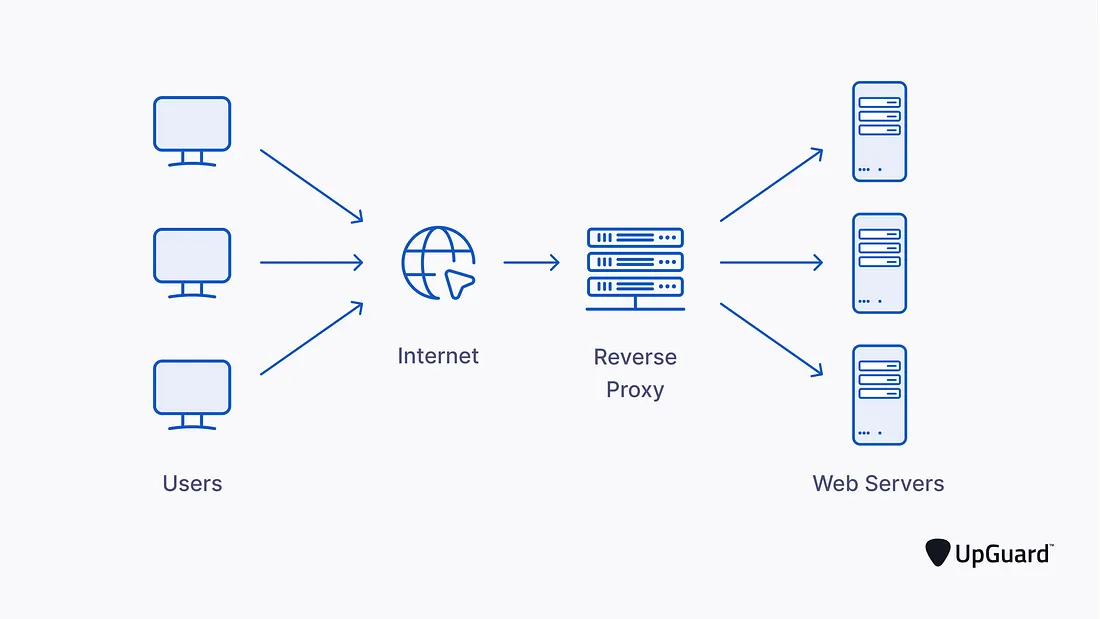Understanding Proxies and Reverse Proxies: A Beginner’s Guide
Arnab das
2 min read · Oct 2, 2024
Imagine how massive platforms like amazon.com handle millions of user requests every second. When you browse a product or make a purchase, the request doesn’t go directly to Amazon’s backend servers. Instead, it goes through something called a proxy server. This intermediary ensures that requests are managed efficiently, adds an extra layer of security, and can even balance the load across multiple servers.
What is a Proxy Server?
A proxy server refers to a server that acts as an intermediary between the request made by clients, and a particular server for some services or requests for some resources. There are different types of proxy servers available that are put into use according to the purpose of a request made by the clients to the servers.
Here we discuss two types of proxy server:
Forward Proxy

A forward proxy sits between a client (like your web browser) and the internet. It acts on behalf of the client, sending requests to websites and receiving data back from the internet. This type of proxy is often used for:
- Hiding the client’s IP address for privacy.
- Bypassing regional restrictions or firewalls.
- Caching frequently requested content to improve speed.
How is a reverse proxy different?

A reverse proxy is a server that accepts a request from a client, forwards the request to another one of many other servers, and returns the results from the server that actually processed the request to the client as if the proxy server had processed the request itself. The client only communicates directly with the reverse proxy server and it does not know that some other server processed its request. This helps in:
- Load balancing across multiple servers.
- Protecting internal servers from direct exposure.
- Caching content to improve response times.
- A reverse proxy can be configured to decrypt all incoming requests and encrypt all outgoing responses, freeing up valuable resources on the origin server.
Use Case: Large platforms like Amazon or Netflix use reverse proxies to distribute incoming traffic evenly across their server farms.